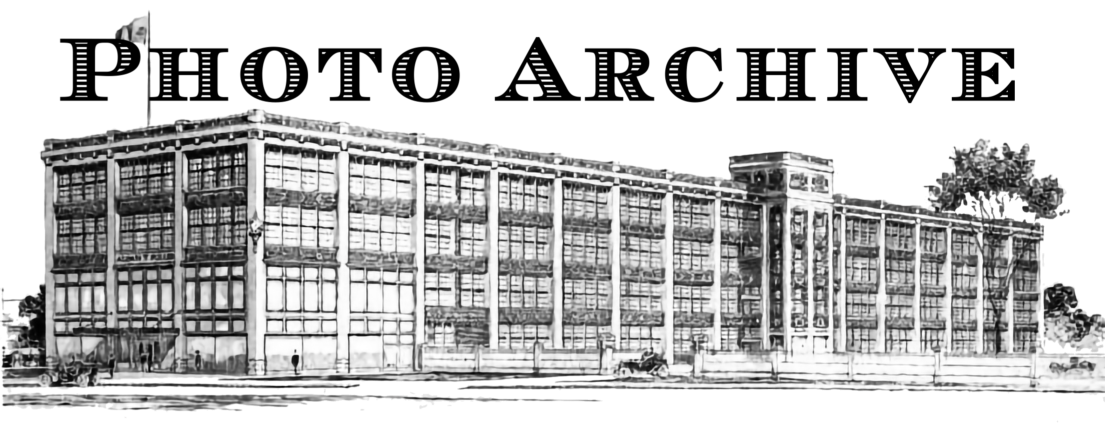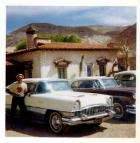|
[< Previous 28 29 30 31 32 33 34 Next >]

|
[< Previous 28 29 30 31 32 33 34 Next >]
The comments are owned by the author. We aren't responsible for their content.
| Author | Thread |
|---|---|
| Carl Madsen |
Published: 01/23/2009 23:29
|
|
Home away from home


Joined: 12/30/2007
From: Minneapolis, MN
Comments: 455
|
Packard: The Cormorant, and Goddess of Speed
Copyright Dan Cooper, 2004 The Cormorant, or more properly the Double-Crested Cormorant, is a migratory bird similar to a heron or crane in appearance, with an elongated neck and sharply pointed slightly hooked beak used for diving after fish in the open water. Its range extends throughout North America from the Bahamas to Nova Scotia and Alaska. Perhaps the bird's most influential introduction into the layman's common knowledge came as a result of its being the model for one of the Packard Motor Car Company's mascots. Packard was at its height of engineering and popular success as a world-class luxury car when the Cormorant was first used as an optional hood ornament in 1932. The Cormorant was used in several versions through 1951, as the company was entering its final stages and the cars were becoming only a shadow of what they had previously been in terms of engineering, beauty and overall excellence. The company used the Cormorant at a time when they already had a well-known mascot in the Goddess of Speed, displayed on various models and in different versions from 1926 through 1950. Some commentators-perhaps those who are not big fans of the Packard Motor Car Company-seem to prefer calling these two attractive ornaments a "pelican," and the "donut chaser." The bird seems clearly to this observer, to be not a pelican, which would have an enlarged pouch extending from a longer narrow beak. Admittedly, the two birds are in the same family. And in a few versions of the company's own publications the Cormorant was at some times referred to as a pelican. This no doubt comes from the car company's heraldic family coat of arms, which is described in part on the Packard Club Website as, "...a pelican in her piety." Some sources claim that the original intent was for the mascot to be a pelican, in line with the company's coat of arms. While this may be true, the ultimate form of the mascot bird is clearly more graceful than any pelican this writer has ever seen. Call it what you will, this "Cormican" is one of the more beautiful hood ornaments from the glory days of the automotive mascot. The Goddess of Speed, on the other hand, holds not a donut, but a wheel in her outstretched hands, in the direction in which she is racing. Leave it to us Americans to come up with something as crude and insulting as the moniker, "Donut chaser." Despite the popularity of both the Cormorant and the Goddess of Speed, the company seemed to prefer identifying with their long-established trademarks, which included the distinctive radiator shape as well as the script name and Packard coat of arms. An interesting history of these trademarks can be found on the Packard Club Website atpackardclub.org. Packard's radiator shape may be the most well known identifier for all Packard models. If you saw a Packard from the front, and if you knew anything about cars, you knew this was indeed a Packard. The distinctive shape began as a very angular, almost hexagonal look at the top. The bottom, of course, was not angled in the same way, and the hexagon vanished into a perfectly squared off bottom. The sharp "shoulders" of the top portion disappeared into the vertical drop of the sides, giving the radiator a distinctly formal appearance. A small section was taken off at the uppermost point, yielding a flat spot on which was usually displayed a mascot. This look was very similar to that of Rolls-Royce radiators in the early years of the 20th century. Possibly for that very reason, the Packard radiator underwent some detail changes that defined the Packard "look" more specifically. Over the years this shape was modified to include some softer shoulders with a more rounded top portion ending in an indentation near the point at which the radiator's vertical sides escaped toward the ground. The appearance was now definitively "Packard," and no one successfully copied the radiator's distinctive shape after these changes were implemented. The Packard family crest, including the "pelican in her piety" perched at the very top, was displayed in various forms and placements on many models. This was frequently in addition to a formal mascot mounted on the forward end of the hood. The heraldic crest first appeared on the cars in 1928, but of course, goes back to the family name. The first members of the Packard family to arrive in America from Europe, are said to have emigrated in the 1600's. Another of Packard's identifiers was the word "Packard" written in script form. This, too, was displayed in various placements on the vehicle. A fine article on the Packard Club Website tells us the script is the oldest of the car company's trademarks, dating from well before the automotive days and spanning the entire history of the marque. See this article, and other relevant articles, on the club Website, atpackardclub.org. In addition to the Cormorant and the Goddess of Speed, Packard also experimented with other mascots, as the concept of hood ornaments had reached its heyday in the industry. One ornament called Adonis was apparently produced only in 1931. Made in die-cast zinc and chrome or silver plated, it was designed by E. McCarten, and was also know as the sliding boy, with the young figure seated in an apparent sliding posture, as on a water slide. The Cormorant and the Goddess of Speed remain two of the most beautiful and memorable of automotive mascots. With so many motifs and emblematic trademarks for only one car company, these two typify the company's graceful elegance more completely than any of the alternative Packard mascots or trademarks. Copyright Dan Cooper, 2004 |



 0.00 (0 votes)
0.00 (0 votes) Rate this Image
Rate this Image






